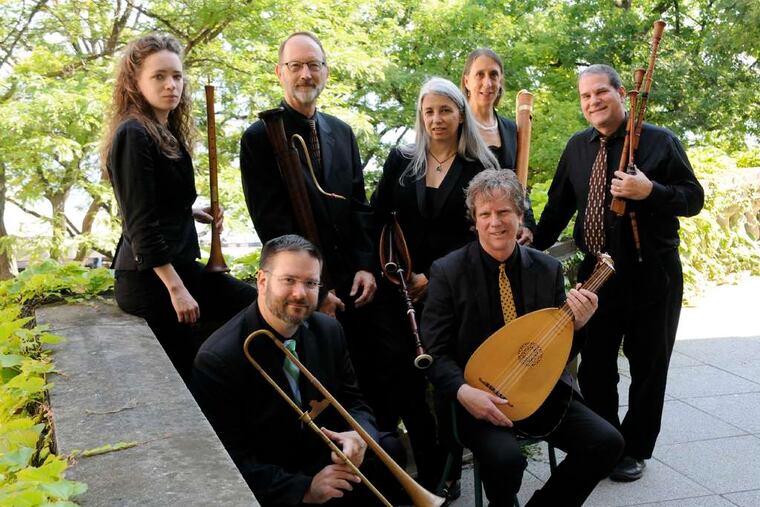Review: Piffaro plays songs of Ferrara
So you think sumptuous Florence was the artistic hot spot of Renaissance Italy? Wealthy, watery Venice? Ever-decadent Rome? Well, there's a dark-horse candidate: Ferrara, a prosperous little city where for two centuries the ruling d'Este family spent handsomely to attract some of the best artists, poets, and musicians in all of Europe.

So you think sumptuous Florence was the artistic hot spot of Renaissance Italy? Wealthy, watery Venice? Ever-decadent Rome? Well, there's a dark-horse candidate: Ferrara, a prosperous little city where for two centuries the ruling d'Este family spent handsomely to attract some of the best artists, poets, and musicians in all of Europe.
One surviving treasure from Ferrara's heyday is a 15th-century songbook with pieces by some of the age's great composers that Duke Ercole I d'Este acquired for his celebrated (and well-paid) wind band.
Over the weekend, the versatile musicians of Philadelphia's own celebrated (and underpaid) Renaissance wind band, Piffaro, performed a stimulating program built around that manuscript. Alternating between the typical Renaissance alta cappella (loud ensemble, meant for large rooms and the outdoors) and bassa cappella (soft ensemble, for chambers and chapels), the players - as heard Saturday at the Presbyterian Church of Chestnut Hill - led us through the places and situations in which the Duke would have used his band.
Mind you, the alta cappella - shawms, the raucous ancestors of modern oboes, and sackbuts, early trombones - really is loud, making cultivated love songs and sophisticated sacred music sound intense and even boisterous. It's not easy to shape phrases musically on these rambunctious horns, but Piffaro does it better than just about anyone.
The suites using the bassa capella - here, recorders with lute and harp - offered a welcome contrast. The recorders sounded surprisingly full with the church's acoustics, and Piffaro's musicians coordinated with one another wonderfully, keeping the complex part-writing clearly audible. A particular treat was the way Christa Patton's tangy Renaissance harp blended graciously with Grant Herreid's elegant lute playing in De tous biens plaine, one of the century's most-admired courtly chansons.
Yet the most impressive achievement of the evening may have been on pieces that didn't come from the Duke's manuscript: balli, dance tunes notated as only a single melody over which his musicians would have improvised additional parts.
Piffaro didn't improvise on the spot - they worked out the extra parts in advance - but they understand thoroughly the rules and principles their Renaissance forbears would have used, and the renditions offered on Saturday were captivating.